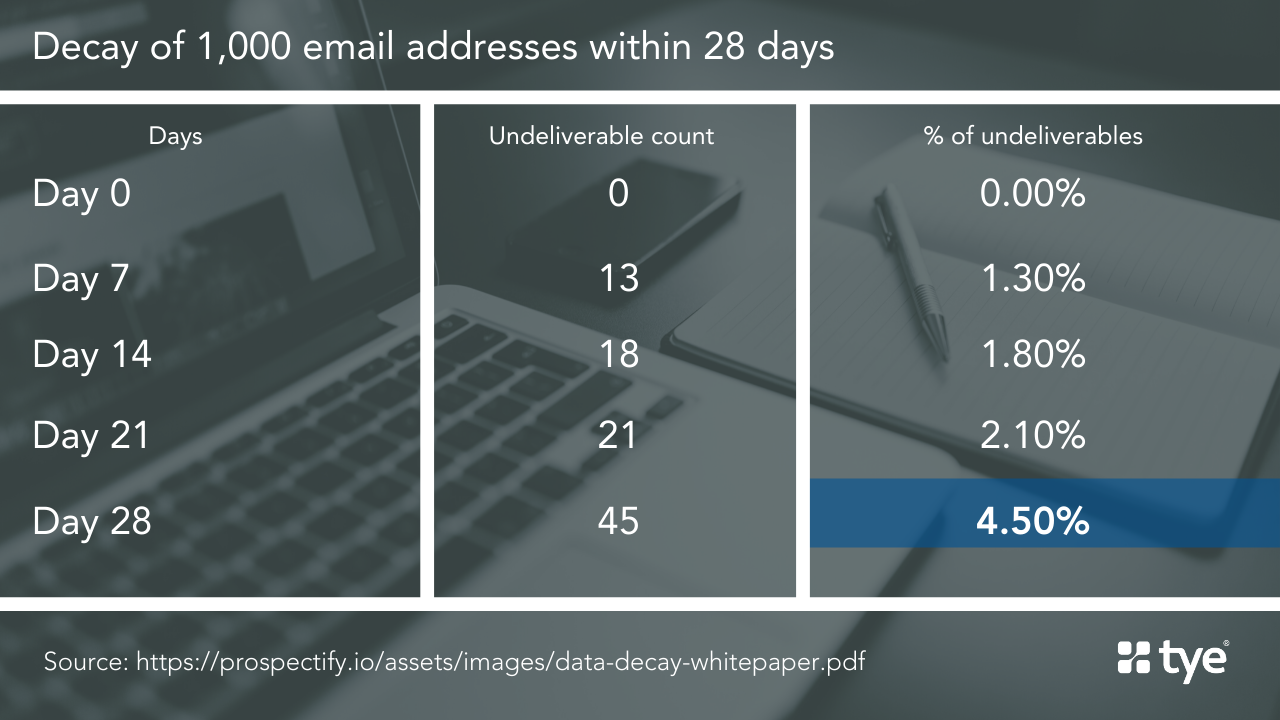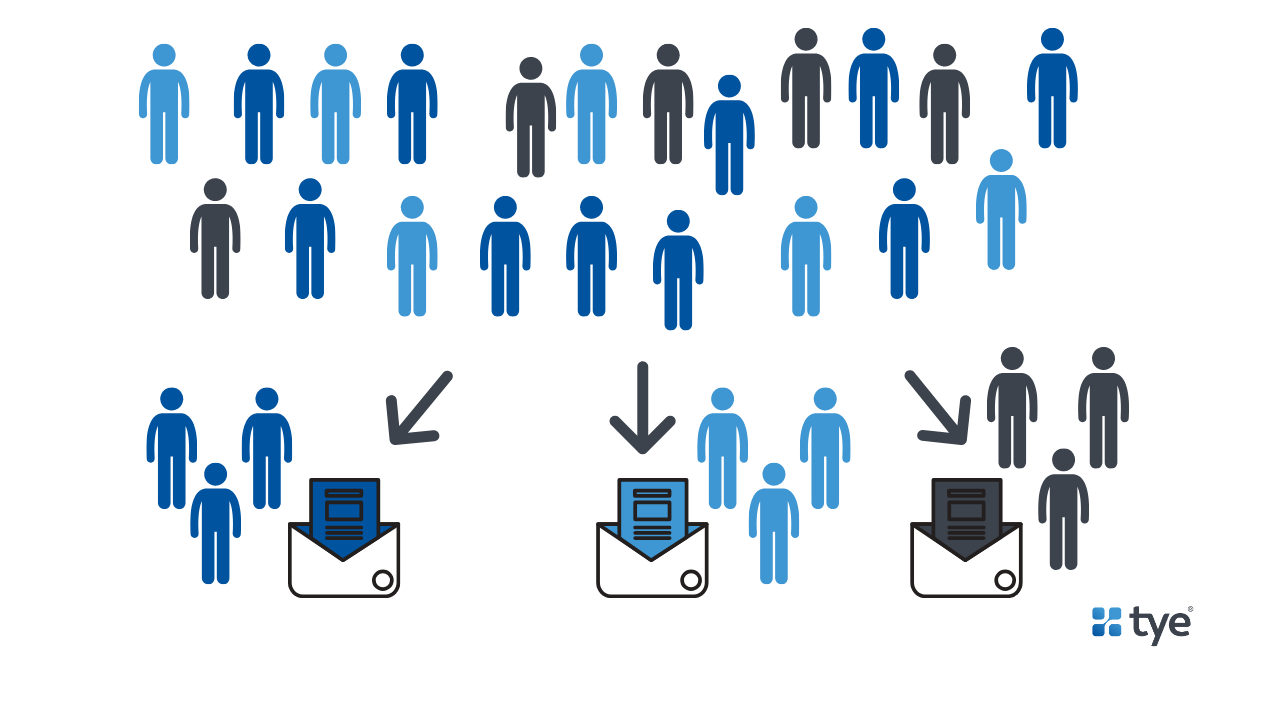How to Send Bulk Emails Without Spamming (2021 Update)

You've bought or built a big list of emails, and now it's time to send your first email.
But you've heard of the horror stories:
"My IP got blacklisted and my subscribers didn't even receive their transactional emails anymore!"
"I spent thousands on a database and almost all of it went to spam..."
"I crafted an amazing email and nobody even received it, let alone open it..."
There are safe ways to send bulk emails and keep your domain intact and deliverability high.
Today we'll walk you through how to avoid the above scenarios. We'll explain:
- When a promotional email becomes spam and how to avoid it
- What you need to know about the technical elements of bulk email sending
- How to protect your sender reputation and domain name
- How to prepare your email campaign for success with improved content and better email list management
We help you protect your sender reputation by cleaning your data before you send mass emails. Want to see how it could work for your unique case? Book a demo today.
Don’t spam your leads

Global spam volume as percentage of total e-mail traffic from 2007 to 2019
You’re likely to have been on the receiving end of spam email. It’s something we see and hear about frequently, but when does sending a bulk marketing email become spamming?
Download our 16-point checklist to avoid email deliverability issues
Why are my emails going to spam?
Maybe you didn't think your email was spam. But it went there, anyway.
The major reasons your email messages might be getting caught up in email providers’ spam filters are:
- You don’t have permission to email the recipient
- Your recipients are inactive
- Your data is incorrect
- You have poor domain reputation
- Your email ‘looks like spam’
Let’s look into how you can avoid these errors:
The importance of good email list hygiene
Messy and outdated data will inevitably bring down your deliverability rates.
It's not even about spam traps and people having moved companies. Sometimes, it's:
- People simply made a mistake typing the email down. This happens more often than you'd like.
- If you're collecting email addresses on paper (in-store loyalty programs or other means), there's an even bigger chance of misspellings and mistakes.
If you buy an email address, some contacts might be old. You just need to clean it.
Whether you’ve got inactive contacts, erroneous email addresses, or even a list of addresses you’re not sure you can contact, it’s important to review your data before sending bulk emails.
Here are a few things you can do with your data:
Step 1: Clean up your list of inactive users
If you’ve been collecting contacts for a while, the likelihood is that some of this data will be outdated. Contacts may have left the business, become inactive because of a change in role, or - they’re just not that into you. Remove contacts who aren’t engaged.
Step 2: Deduplicate your contact list
Over time, your contacts may have changed email addresses, or have typed in different email addresses they own, or even aliases of the same address. It’s likely you’ll have some duplicates in your email lists. Review your lists and remove these to avoid ‘spamming’ the same person with the same email multiple times.
We wrote a guide about how to maintain good email hygiene and how to deal with complicated duplicates.
Step 3: Watch out for spam traps
You may have collected a spam trap without realizing it. They are email addresses that don’t go to a real contact, and therefore bring up your hard bounce rates and drop deliverability scores. Spam traps take many forms but are most often fake addresses created to avoid being emailed.
You can avoid this by validating email addresses. This is where you seek out ‘bad data’, inactive or non-existent email addresses and remove them.
Step 4: Fix typos and field errors
This is just low-hanging fruit:
- Make sure @gmail isn't @gmaoil and @hotmail isn't @htmail
- Make sure there's a '.' where it should be for each email.
- Make sure emails are in the email field and not elsewhere
- Remove duplicate contacts
This is table stakes an absolutely needs to be done before you send out mass emails. If you have too many contacts in your email list, just use a data cleaning tool to do it for you.
Related Post: How to Reduce Your Email Bounce Rate to Below 1%
When to use a data cleaning tool

The bigger your list, the harder it is to manage. As shown in the table above, in just one month you can see a healthy list decay by almost 5%. Reviewing and managing email lists on a frequent basis takes time, and you may not have the bandwidth or data skills in-house to do this effectively.
Not only can a tool clear out bad data, but it can spot duplicates, and help fill in the gaps for incomplete records. According to our data, it takes a human around 3-5 minutes to clean one data point. Let’s look at an example on our blog to see just how long that might take the average company to clean their data:
One of our clients, Vetrotech, had over 80k data points in its database.
It would’ve taken their staff 4,200 hours to clean it.
That's $75.6k and one staff member working on only this, full-time for 2 whole years.
We cleaned all of this data in under two weeks.
Technical factors you should know about
Here are a couple of things you should be aware of when considering the deliverability of your emails:
Domain reputation
This measures all of your past email sends, and how likely you are to be considered ‘spam’. If your reputation is deemed too low, email service providers might block your emails from being delivered. You can use the tool Senderscore to find out just how good your email reputation is.
Hard bounce vs. soft bounce
In your email analytics, you should see statistics for your hard bounce rate and your soft bounce rate for each bulk email send.
Hard bounce is when there is a permanent error preventing your email being sent. To avoid this, you can set up filters that stop emails being sent to hard bounces more than once.
Soft bounce is when there is a temporary error, either a technical issue, or with the recipient's server. You are able to send these contacts emails again in future.
Email authentication
SPF (Sender Policy Framework) records
Sender policy framework is an email-authentication method that is used to stop spammers from sending messages on behalf of your domain name. In other words, they detect any forged sender addresses during the delivery of the email and prevent them from sending.
Having an SPF record won't give you perfect deliverability, but it's an additional step that can help.
DKIM (Domainkeys Identified Mail)
DomainKeys Identified Mail (DKIM) allows email senders to add an email message to your domain name in order to confirm it’s authenticity. You can create a DKIM by signing the email with a digital signature or ‘DKIM signature’.
Using a reputable email marketing tool
Good email automation platform help you avoid many of the pitfalls associated with bulk email sends. From checklists that you can use to review your email content, to easy personalization and segmentation tools.
With an established email marketing platform, you get the advantage of being able to use a relevant sender address, either directly linked to your domain or including it. This helps you with the recognizability and credibility of your email.
IP addresses are included in emails from marketing platforms, almost like a ‘return to sender’ address. Email clients use your IP address as a way to gauge your reputability. Many platforms offer both shared IP addresses (relying on all of their users to be ‘above board’ and have a good email sending reputation), or if you send a lot of bulk emails, you can have a dedicated IP address.
If you are frequently sending a high-volume of bulk emails, you may also require a dedicated IP address. Your email tool will guide you through this, and will be able to suggest a plan that works for your email strategy.
Monitoring engagement with your emails
You should monitor the number of emails going out from your accounts, as well as review analytics such as open rates, unsubscribe rates and deliverability. Ensuring these stay in a healthy range is the best way to avoid ending up with a poor sender reputation.
Review your email engagement frequently so that you can spot where there is a lack of engagement or contacts unsubscribing, and reflect on why that might be. Some reasons include, but aren’t limited to:
- Bad or no segmenting of your audience.
- Your domain hasn’t been authenticated.
- Your content is spammy.
- You bought a bad email database.
- You don’t have double opt-in or other means for ensuring people actually want to be on your list.
Making your email look legitimate
If your promotional emails look like spam, there’s a chance your bulk email campaign will go straight into the spam folder. We all know what a typical spam email looks like: fuzzy images, strange links and incoherent wording. In other words, unprofessional and messy.
Here are a few tips:
- Don't use suspicious links and attachments. Always send content from reputable sources, and avoid shortened links. Avoid attachments as much as possible, unless you know the recipient is expecting it and you are a trusted sender.
- Invest in good design. A modern layout, well-placed text and images all go towards making your email look more genuine.
- Avoid spelling mistakes. Obvious spelling or grammar errors are a sure-fire way of having your recipient doubt the validity of the email. Spell Checker tools like Grammarly are free and so worth the download to avoid pesky mistakes.
- Provide a plain-text version. Spam filters prefer when an email has a plain-text version available. Some recipients (particularly those with additional accessibility needs) prefer this, and some organizations will only allow plain-text emails through their filters. Most email marketing tools allow you to quickly create plain text versions of HTML emails, so it’s a no brainer.
Most email software tools allow you to review your email with previews in the major email clients inboxes, such as; Yahoo, Google’s Gmail, and Microsoft’s Hotmail or Outlook. This helps you ensure your email comes across as attractive and professional for as many recipients as possible.
Personalized email
If you received an email that had nothing to do with you, would you get past the first line, or open it at all? In order to get healthy engagement scores on your bulk emails, a personalized email marketing strategy is crucial.
The content of your email should speak directly to the audience, and respond to their pain points and challenges. The more relevant your content, the less likely you are to be written off by your contacts as spammers.

Email personalization relies on having a good understanding of your client profile, as well as having clear segments to divide up your contacts into groups.
We put together a post where we cover the basics of how to segment an email list and discuss the best practices and what you need to get started.
Test your email subject line
Which is a better email subject line?
Find out how you can send 200+ bulk emails (without spamming)
Or
Send bulk emails
Of course, it’s the one that explains the point of the email, answers a pain-point, and has actionable advice.
Your subject line is your gateway to your content. If you lose interest here, you’ll lose readers.
Coschedule has a tool that gives you a score for your subject line and identifies ways you could improve it.
Do your contacts really want your email?
The easy way to avoid ending up in a spam folder, or worse, on a blacklist, is to ensure your contacts want to receive your email in the first place.
The best way to do this is with a double opt-in method. This is where you send an email to a contact after they’ve signed up to your email list, and ask them to confirm that they want to receive emails from you.
This isn’t required, though, and single opt-in is still a valid method, as long as you have permission to contact them.
Building lists yourself organically is the best way to avoid high bounce rates, end up in a blacklist or receiving spam complaints.
Tip: Check if your email marketing is affected by Europe’s GDPR or the Canadian Can-spam act, as there can be hefty fines for non-compliance.
The unsubscribe link
If the answer to the question above was ‘no’, then an unsubscribe link is key. If an email recipient can’t find an unsubscribe link, and they don’t want to receive more emails, the next logical step is to mark your email as spam.
Emails without unsubscribe links usually get automatically flagged for spam AND they’re against anti-spam and anti-advertisement laws like CAN-SPAM (USA) and UWG (Germany).
Monitoring engagement with your emails
You should monitor the number of emails going out from your accounts, as well as review analytics such as open rates, unsubscribe rates and deliverability. Ensuring these stay in a healthy range is the best way to avoid ending up with a poor sender reputation.
Review your email engagement frequently so that you can spot where there is a lack of engagement or contacts unsubscribing, and reflect on why that might be.
Do you know how to send bulk emails without spamming?
Hopefully, this guide will help you make your mass email marketing campaigns as high quality as possible.
The key is in creating relevant, and personalized content, and delivering to contacts who really want to see it.
We help you protect your sender reputation by cleaning your data before you send mass emails. Want to see how it could work for your unique case? Book a demo today.
Tired of your emails going into spam, even if you aren't doing
anything spammy?
Get our 16-point email deliverability checklist to protect your sender reputation.